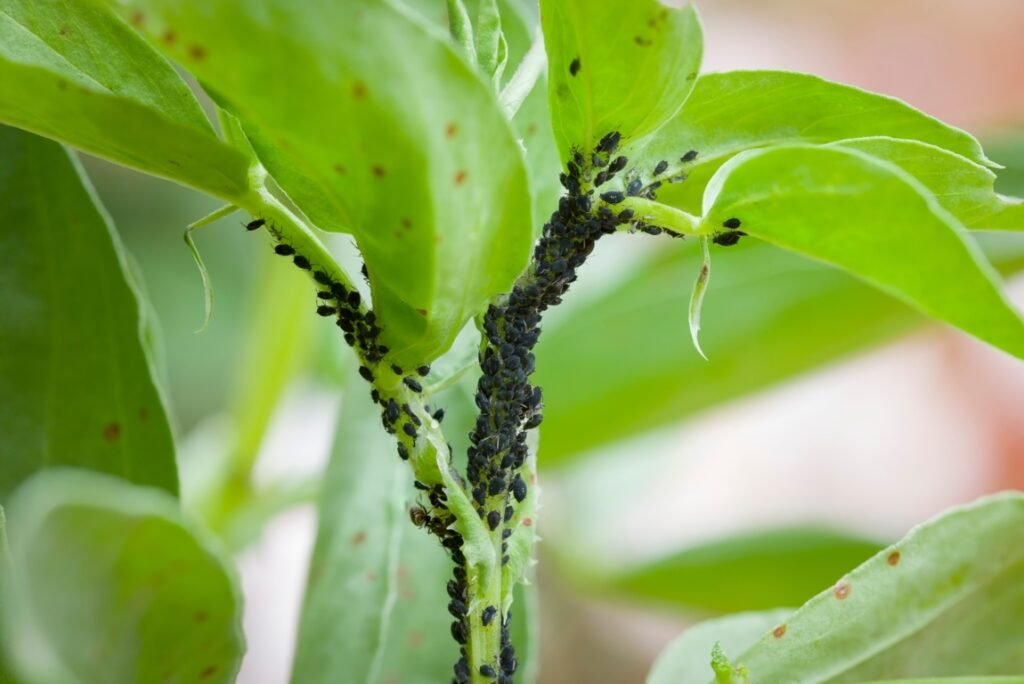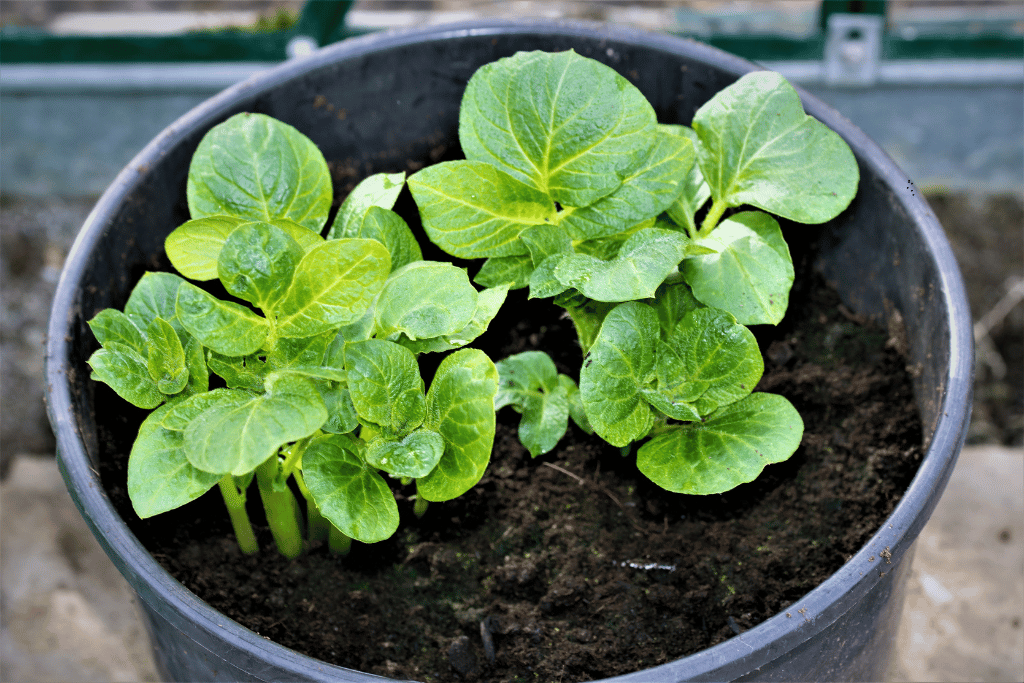
If you love fresh potatoes but don’t have a garden, don’t worry—you can grow them right on your balcony, patio, or even in a small backyard. Growing potatoes in a bucket is an easy, space-saving, and rewarding way to enjoy homegrown spuds without needing a lot of land.
Not only is it a great solution for those with limited space, but it’s also a fun and budget-friendly gardening project. Whether you’re a beginner or a seasoned gardener, this guide will take you through step-by-step instructions on how to grow potatoes in a bucket successfully.
Why Grow Potatoes in a Bucket?
Space-Saving
No need for a large garden! A 5-gallon bucket can fit on a balcony, patio, or small backyard, making it ideal for urban gardeners or those with limited space.
Easy to Maintain
Growing potatoes in containers keeps weeds away, makes pest control easier, and simplifies watering and fertilizing. Unlike traditional garden beds, container-grown potatoes require less effort and reduce the risk of soil-borne diseases.
Better Control Over Soil & Drainage
Buckets allow you to create the perfect soil mix for your potatoes while preventing root rot with proper drainage. This gives you the ability to optimize growing conditions and achieve a better yield.
Fun & Rewarding Harvest
There’s nothing like the excitement of dumping out a bucket full of fresh potatoes—all grown by you! This simple method lets you enjoy the satisfaction of homegrown food with minimal hassle.
Growing Potatoes in a Bucket
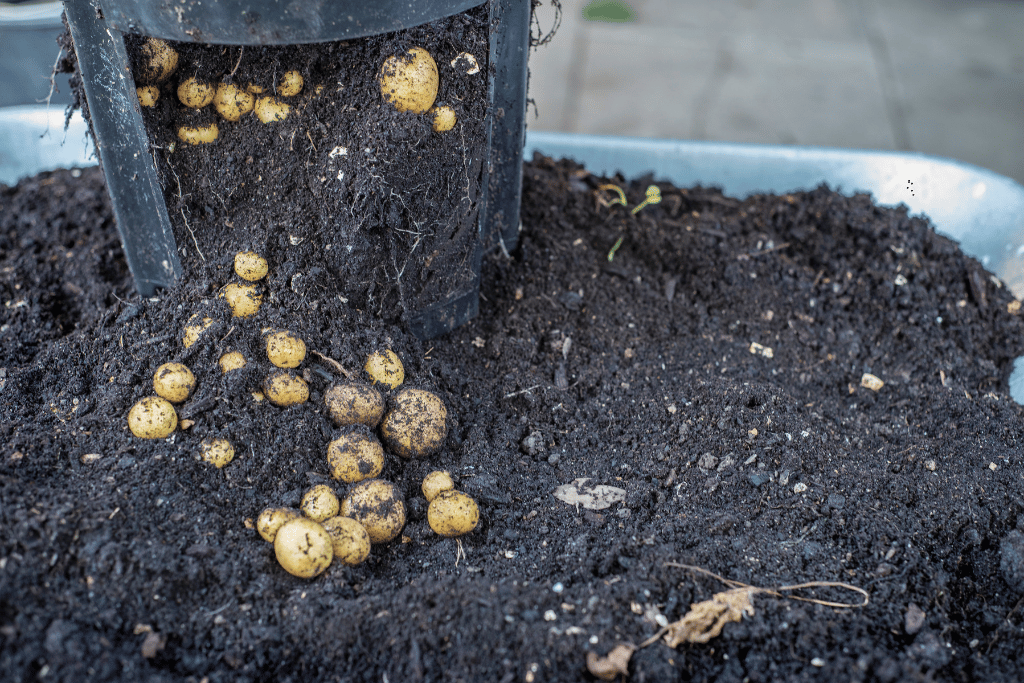
Before you start planting, you need to gather a few essential materials.
Choosing the Right Bucket
A 5-gallon bucket (or larger) is the best option for growing potatoes. It provides enough space for proper root development and tuber growth. Make sure the bucket has drainage holes at the bottom to prevent waterlogging, which can lead to rotting.
The Best Potatoes for Bucket Growing
Not all potato varieties grow well in containers. Choose smaller, fast-growing varieties that thrive in confined spaces. Some great options include:
- Yukon Gold – Great for mashed potatoes and fries.
- Red Pontiac – A high-yielding variety with red skin and white flesh.
- Kennebec – Versatile and easy to grow.
- Fingerlings – Small, gourmet potatoes with excellent flavor.
Essential Supplies
To ensure a successful potato harvest, gather the following supplies:
- Quality potting mix – Loose and well-draining soil is essential. Avoid heavy garden soil.
- Compost or organic fertilizer – This provides nutrients for healthy plant growth.
- A drill – Needed to create drainage holes in your bucket.
- Mulch or straw (optional) – Helps retain moisture and prevent weeds.
Step-by-Step Guide: How to Grow Potatoes in a Bucket at Home
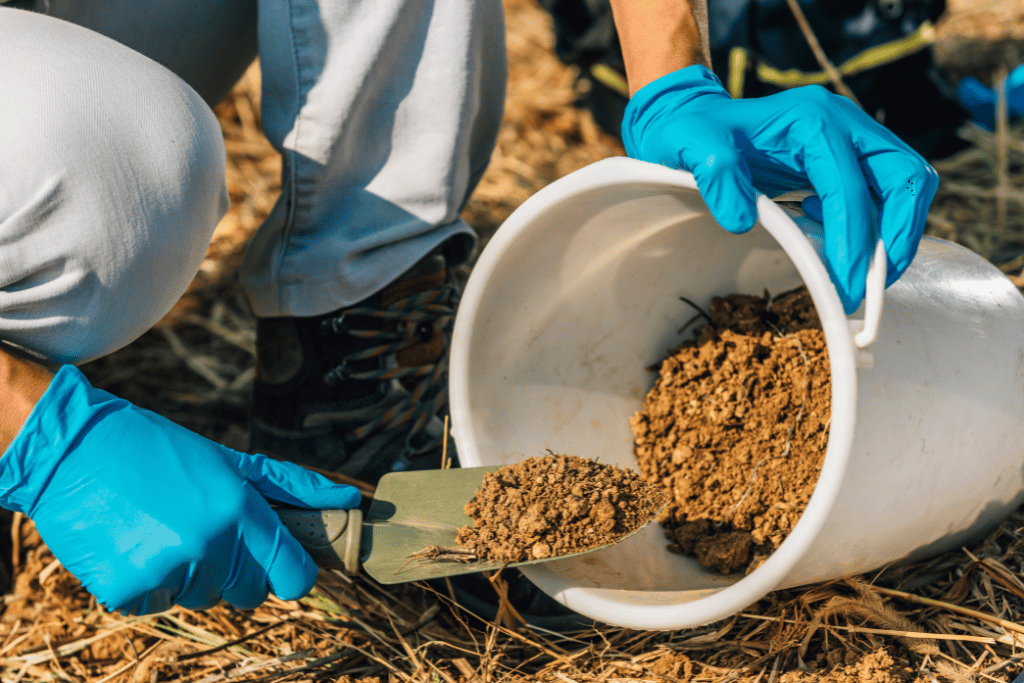
Now that you have your materials ready, let’s go through the step-by-step process of growing potatoes in a bucket.
Step 1: Prepare Your Seed Potatoes
Buy certified seed potatoes from a garden center or online supplier. Avoid using store-bought potatoes as they may be treated with growth inhibitors. If your seed potatoes are large, cut them into chunks, ensuring each piece has at least one “eye” (a small sprout). Let the cut pieces dry for 24-48 hours before planting to prevent rot. Don’t confuse the garden with plants that look like potatoes.
Step 2: Prepare Your Bucket
Using a drill, create several drainage holes at the bottom of the bucket to allow excess water to escape. This helps prevent water buildup, which can cause the roots to rot. Adding a 2-3 inch layer of gravel or small rocks at the bottom can further improve drainage.
Step 3: Add Soil & Plant Your Potatoes
Fill the bucket with 4-6 inches of well-drained soil before placing the seed potatoes inside. Arrange 3-4 seed potatoes in the bucket with the sprouts facing upward. Cover them with another 3-4 inches of soil and gently pat it down.
Step 4: Water Well
Potatoes need consistent moisture but don’t like sitting in water. Keep the soil evenly moist but not soaked. Check the soil regularly and water when the top inch feels dry. Tap water also can be used.
Step 5: Hill Your Potatoes (Important!)
As your potato plants grow and reach about 6 inches tall, add more soil to cover the lower stems, leaving the top leaves exposed. Repeat this process every few weeks until the bucket is nearly full. This practice, known as hilling, encourages more potatoes to form along the buried stems, leading to a higher yield.
Step 6: Watch for Pests & Diseases
While potatoes are relatively low-maintenance, they can be attacked by aphids, potato beetles, and blight. Check your plants regularly for signs of damage. If pests appear, try using neem oil or gently washing them off with water. Keeping your plants healthy and well-fed can also make them more resistant to diseases.
Step 7: Harvest Your Potatoes
Potatoes are ready to harvest when the plants turn yellow and begin to die back, which usually happens 10-12 weeks after planting. To harvest, simply tip over the bucket and sift through the soil to collect your potatoes!
Tips for a Great Potato Harvest
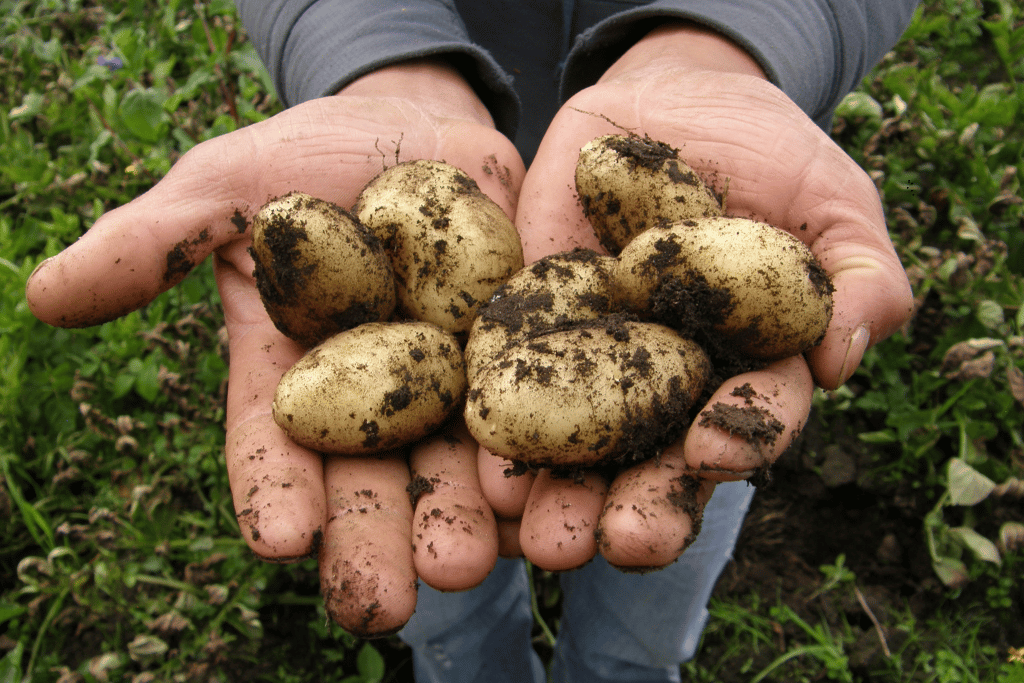
- Use rich, loose soil – Potatoes need well-aerated soil to grow properly.
- Don’t overwater! Too much moisture leads to rot. Keep the soil damp, not soggy.
- Hill your potatoes regularly – This will increase your yield.
- Be patient! The longer they grow, the bigger your potatoes will be.
Conclusion
Growing potatoes in a bucket is one of the easiest and most rewarding gardening projects you can try. It’s perfect for beginners, saves space, and lets you enjoy fresh, homegrown potatoes with minimal effort. Whether you have a big backyard or just a tiny balcony, you can harvest delicious spuds with just a few buckets and a little patience.
So grab a bucket, plant some potatoes, and enjoy the magic of homegrown food!
How Long Does It Take to Grow Potatoes in a Bucket?
Most potatoes are ready to harvest in 70-100 days, depending on the variety.
Can I Grow Potatoes Indoors?
Yes! As long as they get 6-8 hours of sunlight or grow under a strong LED grow light, potatoes can be successfully grown indoors.
Can I Use Straw Instead of Soil?
Yes, you can use straw or a mix of soil and straw to grow potatoes. Using straw makes harvesting easier since you don’t have to dig through soil to collect your spuds.



